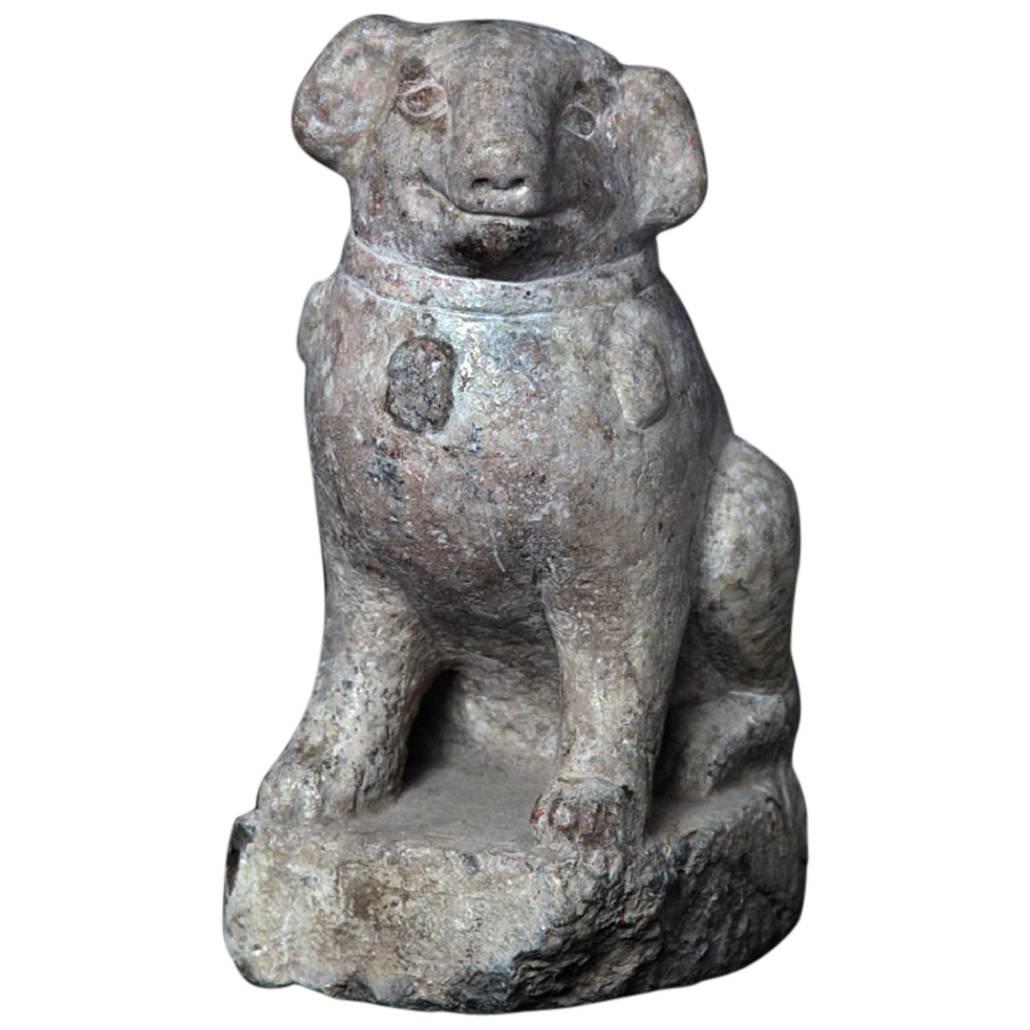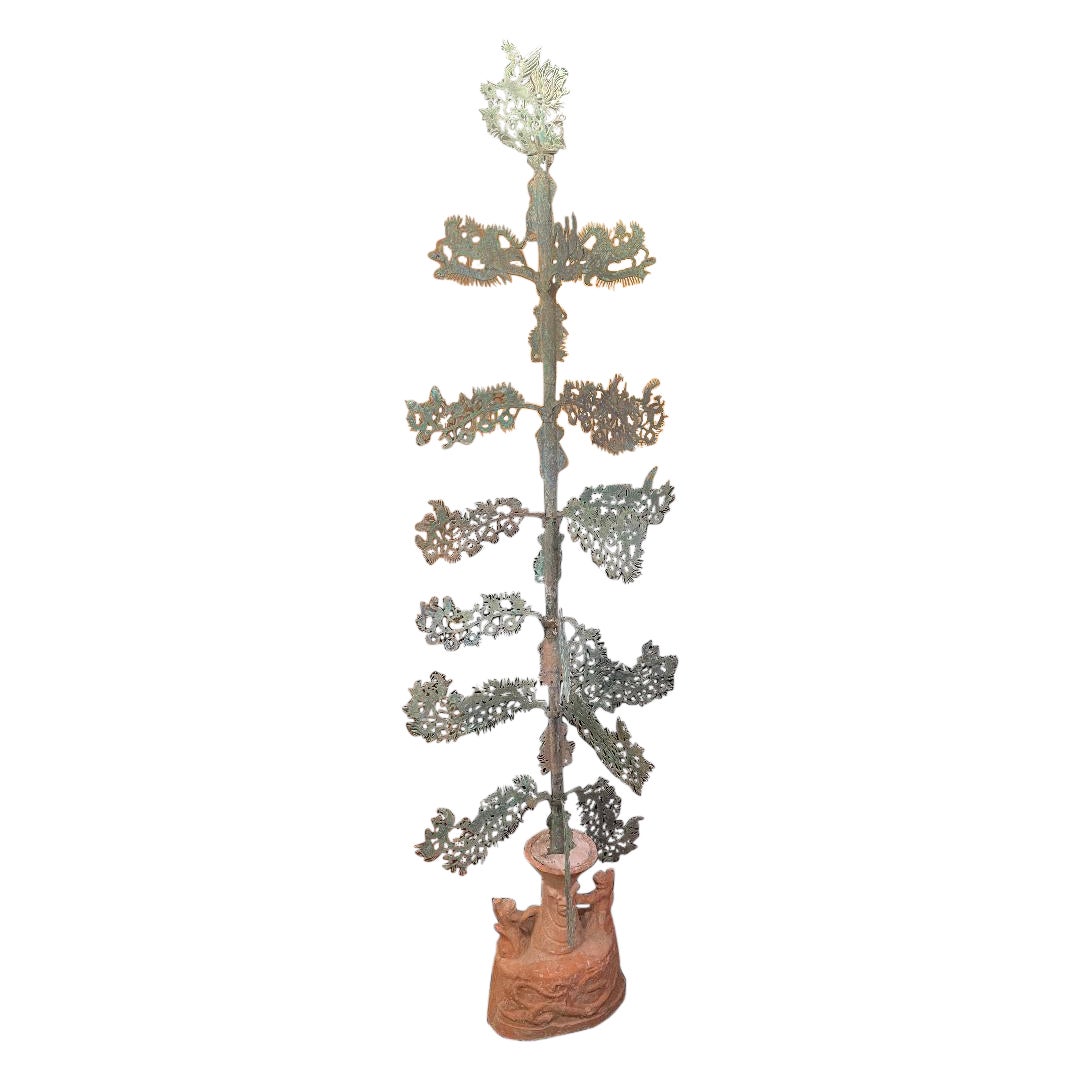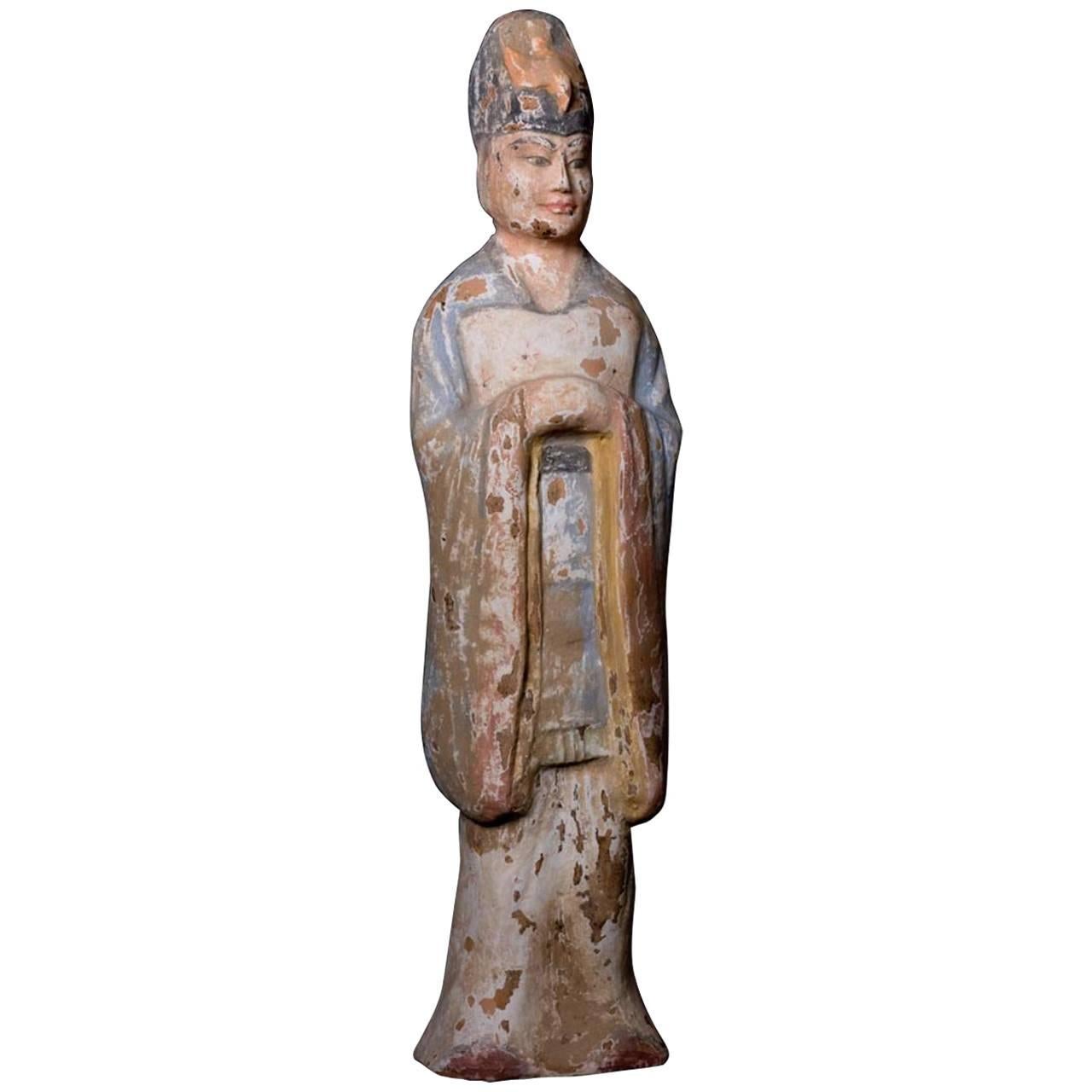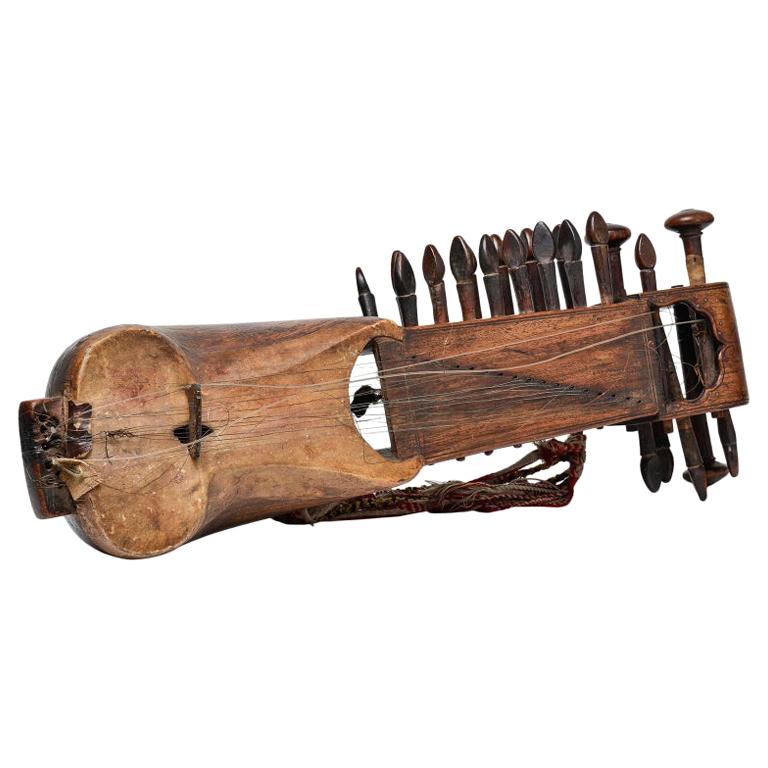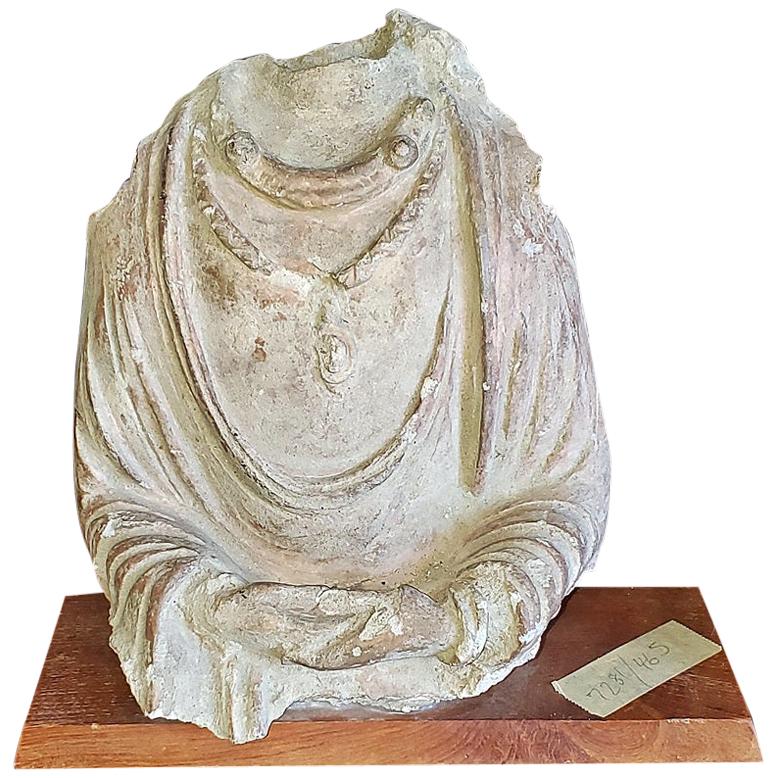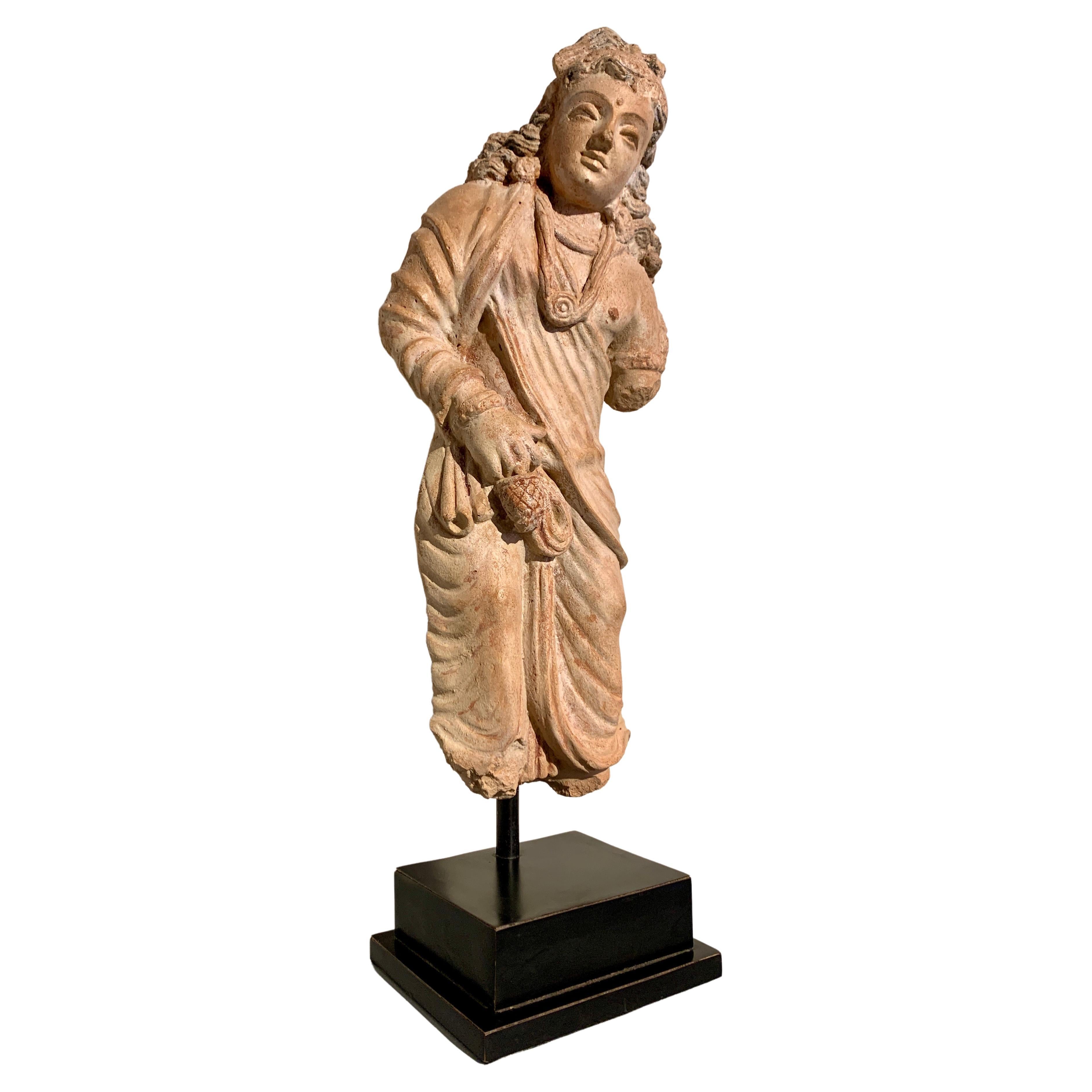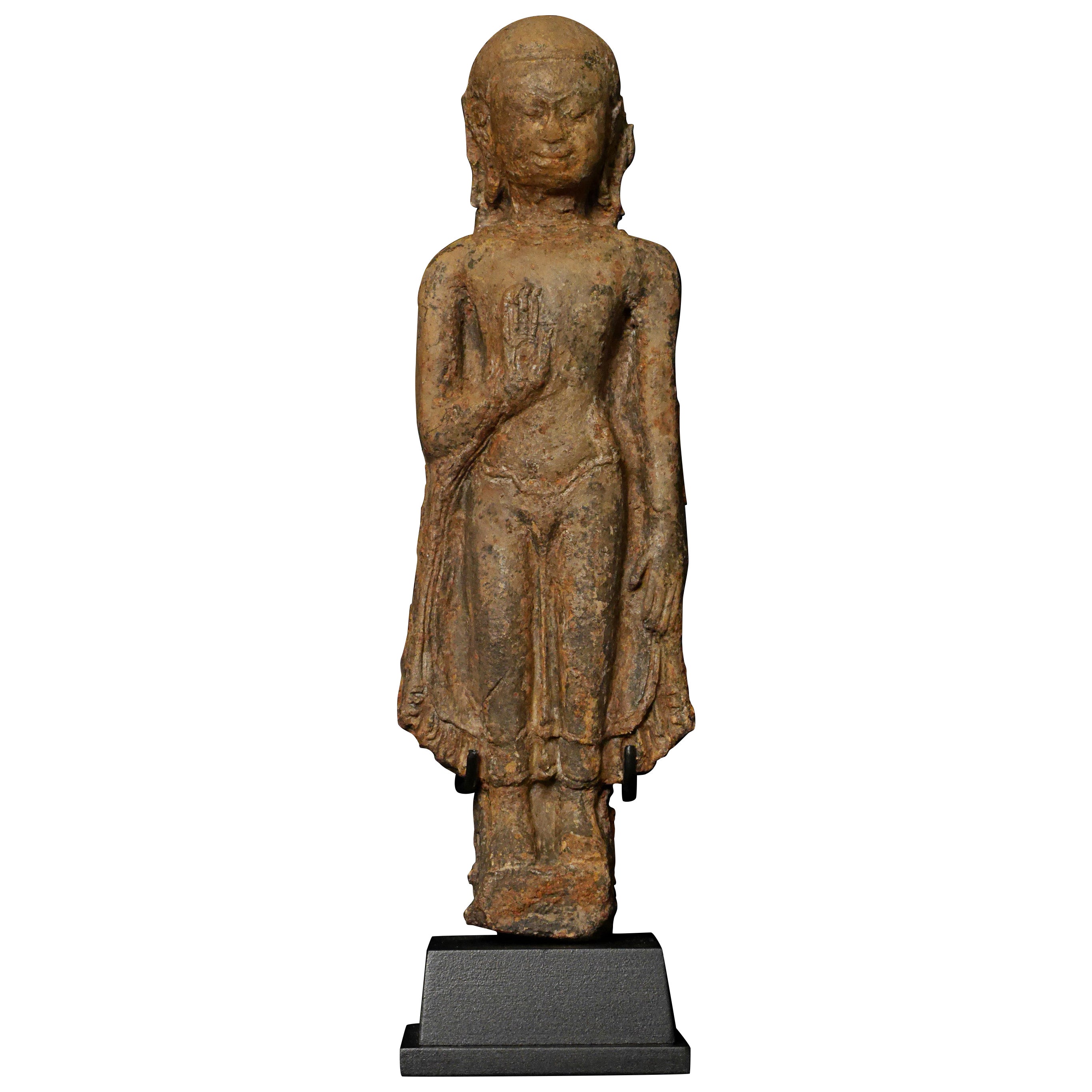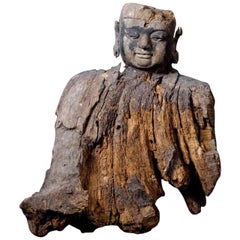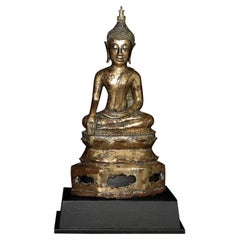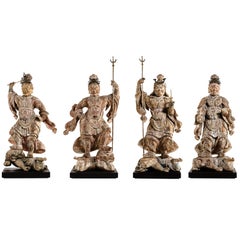
An Important and Very Rare Group of the Shitenno
View Similar Items
1 of 10
An Important and Very Rare Group of the Shitenno
About the Item
- Dimensions:Height: 25.6 in (65 cm)Width: 11.82 in (30 cm)Depth: 11.82 in (30 cm)
- Sold As:Set of 4
- Materials and Techniques:
- Place of Origin:
- Period:
- Date of Manufacture:circa 1450
- Condition:Wear consistent with age and use.
- Seller Location:Amsterdam, NL
- Reference Number:1stDibs: LU3236111135511
You May Also Like
- Ming Dynasty Very Rare Wooden Bust of LohanLocated in San Pedro Garza Garcia, Nuevo LeonVery serene depiction of a Lohan carved in wood, eroded with the pass of time. Lohan is the Chinese term, derived from the Sanskrit word Arhan, for a disciple or follower of Buddha w...Category
Antique 15th Century and Earlier Ming Antiquities
- Pair of Very Refined Tang Dynasty Pottery Statue of Guardians, Oxford TL TestedLocated in Greenwich, CTA pair of very refined standing pottery statue of guardians, dramatic facial expression, beautiful detail, early Tang dynasty 618-907, come with one Oxford authentication TL test cer...Category
Antique 15th Century and Earlier Chinese Tang Antiquities
MaterialsTerracotta
- 16thC Northern Thai Bronze Buddha, Very Finely Cast and Sculpted, 7920Located in Ukiah, CAWith the very best sculpting and casting of its kind- I present this 16thC Northern Thai Bronze Buddha. Deeply serene face. Nice size at 10 1/8 inches tall, 12 1/8 inches on a custom...Category
Antique 16th Century Thai Antiquities
MaterialsBronze
$2,065 Sale Price30% Off - 18th C Tibetan Bronze Tsong Ka Pa, Very Best of Its Type-Special - 9763Located in Ukiah, CA9763 - Finest 18th C Tsong Ka Pa. World class. Measures 6.75 inches tall. Purchased 10 years ago from a high-end Silicon Valley collection for my personal collection, that was forced to be sold off due to divorce. The Collector had an extremely good eye and had managed to put together a world-class collection 20 years ago before pieces like this became nearly impossible to find. recently, and since I have medically retired and moved to Ukiah oh, I have decided to merge my personal and Buddha Gallery Collections and have put everything up for sale. I am in the process of listing the very last of my personal items that have previously and not been available for sale up until this point. I bought many of them for strong prices as I bought them as a collector who is passionate about Buddhist and Hindu sculpture, and who only buys what I truly love myself. I have been collecting for more than 35 years now, as my collecting tracks alongside my Buddhist Meditation and Buddhist practice. Note the very fine beating on the robes-the Promote the level of refinement to the casting, sculpting, and finishing required means that only a fraction of the top 1% of Tibetan bronze sculpture...Category
Antique 18th Century Tibetan Tibetan Antiquities
MaterialsBronze
- Important Ancient Chinese Effigy Pug Dog, Ming Dynasty 1368-1644Located in South Burlington, VTChina, a carving of a canine “Pug”, Ming Dynasty, 1368-1644 CE Dimensions: 38 cm, 15” High Photographs taken indoors and out of doors for your viewing pleasure. The hand carved limestone beast shown on its haunches with naturalistic joyful expression and a well defined compact head, ears, noes, eyes, feet, and tail parted to one side on reverse with distinctive collar ornament seated four square on a thick base all-over showing a weathered surface from significant age. Formerly exhibited “Asia Week” New York City, Fuller Building, Hutton Gallery 2006. Provenance: ex collection luoyang, Henan Province, China. Includes custom display base as shown Catalog reference: 35 years collecting 35 treasures, Number 35, p.76 (photo) In ancient China, it is a well-known fact that several types of small dogs were bred and were favored pet gifts between emperors and kings including Lion Dogs, Pekingese and Lo-sze breeds. Some Lo-sze are pictured wearing collars with bells a frequent combination fancied by European royalty of the seventeenth and eighteenth centuries. Lo-sze or pugs were prized for their compact body, good bones, flat face, square jaw, short coat, curled tail, side set back ears, and temperate disposition. History: Placing stone animals in important tombs can be traced back at least to the Qin Dynasty (221-206 BCE), some two thousand years ago. In ancient times, stone animals and human figures placed before imperial tombs symbolized royal power and privilege in addition to decorative functions. The first Ming tomb...Category
Antique 15th Century and Earlier Chinese Ming Sculptures and Carvings
MaterialsLimestone
- Important Chinese Ancient Bronze Money Tree, 25BC-220ADLocated in South Burlington, VTChina, Ancient Bronze “Money Tree” Yaoqian Shu with original pottery base, Han dynasty (25 BCE – 220 CE) Dimensions: 155cm, 62 inches high A sculpted terracotta pottery base in the form of a tortoise with attendants and inserted with five individual bronze pole segments with twenty four individual hanging bronze open work money “branches” attached in tiers, four per tier and topped with a figure of a bronze phoenix as apex most bearing varying degrees of malachite and azurite encrustation from ancient burial. Important Description Details: Pottery "tortoise" base: 14.5" high and 11" wide Bronze sections: 7pcs pole bronze sections approximately 8" length each 1pc top "phoenix" bronze section approximately 7" high and 6" wide 20 pcs long bronze hanging wings approximately 10" long and 5" wide each 4 pcs short bronze hanging wings (near top) approximately 7" long and 4" wide each Total 32 pcs with ancient green and blue azurite patina. Catalog reference: Schneible Fine arts catalog - 35 Years Collecting Treasures- Number 11p. 28 (see photos) Provenance: Provenance: Private family collection formerly exhibited “Asia Week” New York City, Fuller Building, Zabriskie Gallery, 2008. History of money trees: In the late Han Dynasty tombs...Category
Antique 15th Century and Earlier Chinese Han Antiquities
MaterialsBronze




